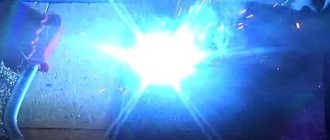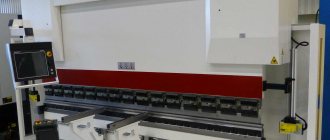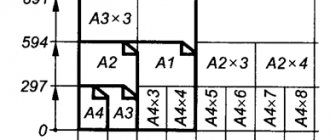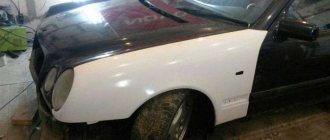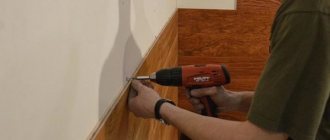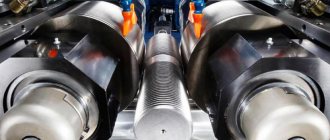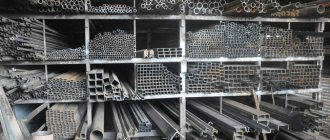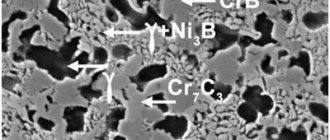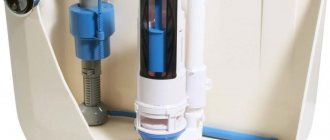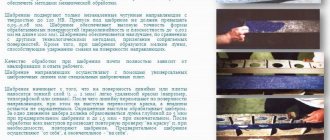The most effective technological operation that allows you to bring the surface of metal parts to an ideal state is lapping. Parts whose surfaces have been subjected to this procedure may form tight or tight-moving joints. The need for the formation of such connections and, accordingly, for a technological operation performed using special tools and materials, exists in many fields of activity.
General concept of lapping and finishing
Lapping is the processing of parts working in pairs to ensure the best contact of their working surfaces.
Lapping is a precise metalworking operation for treating surfaces with abrasive powders or pastes to obtain a tight fit between them. Lapping is carried out with special tools - laps, on the surface of which grinding materials or lapping pastes are applied.
Hydraulic pairs, valves and seats in internal combustion engines, and working surfaces of measuring instruments are subjected to grinding.
Finishing is the finishing of parts in order to obtain precise dimensions and low surface roughness.
Finishing is the final stage of grinding surfaces to specified dimensions to obtain the exact shape of the surfaces being processed. When processing surfaces by finishing, dimensions are obtained with an accuracy of up to 0.001 mm and a mirror surface. This operation is complex and requires persistence and patience from the locksmith.
Lapping and finishing are carried out with abrasive powders or pastes applied to the surfaces being treated, or with a special tool - lapping. The allowance for lapping is 0.01-0.02 mm, for finishing -
0.001-0.0025 mm. Lapping accuracy is 0.001-0.002 mm. Finishing ensures accuracy of 5-6 grades and roughness up to Rz 0.05.
As lapping materials, hard abrasive materials are used in the form of grinding powders with a grain size from 4 to 12 and micropowders (soft abrasives) with a grain size from M5 to M40. In addition to powders, GOI pastes and diamond pastes are used for lapping and finishing.
GOI pastes are divided according to their purpose into three types:
- • rough - used for preliminary grinding, gives the surface a matte appearance, has a dark green color;
- • medium - used for final grinding, creates a clean matte surface, has a green color;
- • thin - used mainly for finishing and giving the surface a mirror shine, has a light green color.
Diamond pastes, natural and synthetic, have twelve grits divided into four groups, each with its own color:
- • coarse grain (AP 100, AP80, AP60) red;
- • medium grain (AP40, AP28, AP20) green;
- • fine grain (AP 14, AP 10, AP7) blue;
- • fine grain (AP5, APZ and AP1) yellow.
Diamond pastes are used for grinding and finishing products made of hard alloys, steels, glass, ruby, ceramics, etc. According to consistency, diamond pastes are divided into solid, paste-like and liquid.
For different abrasive powders, different lubricants are used: for coarse and medium ones - kerosene, and for fine ones - machine oil. Lubricants help speed up lapping and finishing, reduce roughness, and also cool the surface of the part. The best lubricant for lapping (finishing) steel and cast iron, which significantly increases the productivity of the process, is kerosene with the addition of 2.5% oleic acid and 7% rosin.
Lapping and finishing are carried out with a special tool - a lap, the shape of which must correspond to the shape of the surface being treated. Usually, soft, fine-grained cast iron is used to make laps; for thin and long laps, steel St2 and StZ are used. Steel laps wear out faster than cast iron laps.
Lapping of wide surfaces is usually performed on two lapping plates. For preliminary grinding, plates with grooves up to 1 mm deep and wide, located at a distance of 10-15 mm from each other, are used. The grooves collect residual abrasive material. For final grinding, plates with a smooth surface are used. Cylindrical laps are used for finishing cylindrical holes. Such laps can be either unregulated or adjustable.
Preparing the lap for work involves carving the laps, i.e., surface saturating the laps with particles of abrasive materials (powder or paste). There are direct and indirect methods of caricature. With the direct method, abrasive particles are pressed into the lap before starting work, with the indirect method - during work.
A flat lap is carved (with the direct method) by rolling a hardened steel roller along the plane of the lap (Fig. 13.1), onto which a thin, even layer of abrasive powder is poured. After caricature, the remaining abrasive powder is removed from the lap with a hair brush, the lap is lightly lubricated and used for work. A round lap with a diameter of more than 10 mm is mounted on a solid steel plate.
Rice. 13.1. Technique for caricaturing a flat lap with a steel roller
An indirect method of caricature is to cover the lap with a layer of lubricant, which is then sprinkled with abrasive powder. You should not add new abrasive powder during operation, as this leads to a decrease in processing accuracy.
For productive and precise lapping, it is necessary to correctly select and strictly dose the amount of abrasive materials, as well as lubricants. When lapping, it is necessary to take into account the pressure on the parts being ground. Typically, the grinding pressure is 150–400 kPa (1.5–4 kgf/cm
2
). During final grinding, the pressure must be reduced.
Equipment and tools for grinding and finishing of metal
Depending on the configuration and size of the surfaces being processed, as well as production tasks, lapping operations are performed manually or using machine tools. In this case, in addition to the laps themselves, various devices and equipment can be used. The design of the lapping tool depends on the shape of the surface being processed and the technological features of the specific type of lapping. As a rule, the following types of laps are distinguished:
- flat (plates, bars, disks);
- cylindrical with an outer working surface (smooth and with grooves);
- cylindrical covering (including adjustable);
- shaped (angular, with grooves, with guides, etc.);
- special (sliding, double-sided and others).
Machine lapping is used as a finishing operation in mass production. It is performed on specialized machines or on drilling, turning and milling equipment equipped with special lapping tools and equipment, which are most often intended only for certain types of lapping. A lapping machine typically transmits rotary or reciprocating motion to one or more laps, and the part is mounted in special fixtures. In mass production, a large number of identical parts (valves, bushings, etc.) are fixed in special devices called separators, and the lapping machine processes them all at the same time.
Machine lapping
Manual lapping is mainly used for single-piece production of parts and repair of various equipment (shut-off valves, engine blocks, measuring instruments, etc.), when not too high demands are placed on the roughness of the surfaces being processed. In these cases, hand-held lapping machines and special attachments for pneumatic and electric tools are also used. Judging by the videos on YouTube, the most common operation using such attachments is grinding in car engine valves.
In the technical literature there is such a term as “lapping hammer”. Despite its consonance, this tool has nothing to do with finishing surfaces according to the highest roughness classes - it is used only when working with wood veneer.
Based on the results of an Internet search, it seems that home craftsmen use lapping exclusively when repairing automobile engines (valves, heads, cylinder blocks). If anyone knows about other cases of using lapping technologies when independently performing equipment repairs, please share the information in the comments to this article.
Popular PP brands on the Russian market
In Russia there are many factory brands of PP on sale, which may have strong differences. Below we will look at several popular brands of pastes.
VMP Classic
The most popular brand of lapping abrasives on the Russian market. This material can be used to treat both diesel and gasoline engines. Can be used for both rough and final finishing. The average grain size is 70-90 micrometers, but during processing the grain is reduced by 5-10 times, which is a big plus (this ensures the versatility of the paste). PP does not deteriorate during storage and is easy to use. The brand is available in the form of plastic tubes with a spout, as well as in bags. The cost of a large tube weighing 400 grams is 700-800 rubles.
VMP Professional
It is an improved modification of the previous brand. Suitable only for treating gasoline engines (for treating diesel engines, it is recommended to use another brand of VMP Almaznaya). Can be used for roughing or finishing. The average fraction size is 45-75 micrometers, and during processing the fractions decrease in size. The brand is professional - it can be used to treat engines of both simple cars and racing ones. You can also rub the valves of trucks, buses, and various military equipment with the paste. The paste is available in the form of tubes and also in bags. The cost of a tube weighing 400 grams ranges from 900 to 1200 rubles.
VMP Diamond
This brand of PP contains diamond chips. Therefore, it can be used to process durable diesel engines. But it is not recommended to use it for grouting gasoline engines - grains of the material will leave scratches, which can lead to cracking of the valves. The grade is used for roughing or finishing. PP is not recommended to be mixed with other compounds. Available in four different varieties (tubes with composition + 1 kg bag). The cost of a large tube weighing 400 grams ranges from 1300 to 1800 rubles.
ABRO GP-201
ABRO GP-201 is available in the form of small jars, where the total weight of the two mixtures is 140 g. Each jar is divided into two sections:
- The first section contains COARSE paste. This composition is coarse-grained, and it is used for rough work, as well as for processing heavy-duty valves.
- The second section contains another PP, which is called FINE. This composition belongs to the category of fine-grained, and with its help final work is performed.
- Using PP is simple - first you use COARSE, and then use FINE. This processing method allows you to perform cleaning efficiently, conveniently, and quickly.
ABRO GP-201 does not deteriorate during storage. PP is classified as heat-resistant, so it can withstand high temperatures that a powerful engine can reach during operation. The cost of one such jar is 200-400 rubles.
Lapping and abrasive material Done Deal
The composition of this material is similar to ABRO GP-201 paste:
- The packaging is divided into two self-contained sections.
- The first section stores the universal medium-grain mixture.
- The second section stores the fine-grained mixture.
- For grouting, a person first uses a medium mixture, and then a fine one.
Done Deal is suitable for treating gasoline engines. The mixture does not contain large fractions, so it is not recommended for use on severely damaged valves. One package includes 2 identical tubes with a total weight of 50 g. The cost of one package is 300-500 rubles.
GOI
It is a lapping paste based on chromium oxide and stearin. Suitable for treating all petrol engines. The average cost of 1 package is 100-200 rubles. Available in three varieties depending on grain size:
- Experienced people should buy coarse and fine grain GOI, and the processing should be done in two stages.
- Beginners are advised to give preference to universal medium-grain PP, and processing can be done in one go.
KemiSphere II – Tabletop polishing machine for spherical/ball surfaces
The KemiSphere II is a small, single station spherical lapping and polishing machine that is ideal for matching 2 spherical shapes or, if equipped, can lap and polish spherical shapes to better than 5 µm roundness with a mirror finish. It's an ideal replacement for jobs currently done by hand, and its benchtop design makes it a useful addition to any spherical lapping shop.
These machines provide an extremely cost-effective and consistent process for machining spherical shapes in a huge variety of finishes and are capable of processing a range of different materials, lapped as separate components or as two compatible spherical shapes. Consistency in a manual process can be quite a challenge, and the KemiSphere II is the ideal solution. The HMI allows component-specific programs to be stored with drive speeds, pendulum angles, machining times and contact pressure. Kemet offers to perform the processing in its testing laboratories and ensure test performance is reproducible using samples and answer all questions before ordering the machine. This means that the machines come pre-programmed, ready for use in any application.
- 3 motors with independent, variable speed control
- PLC Siemens with HMI interface
- Pressure control
- Tabletop type machine
- Machining of components up to 100 mm in diameter
- Programmable start and end points for corner machining
- Start the process with one button
- Manual mode for easier machine setup
- CE marking
- Full safety guard with interlocks
- Dimensions: 906 x 1055 x 549 mm
- Power supply: 230V-single phase-50Hz or 110V-single phase-60Hz
- Product code: 359316
Areas of application of technology
The process of finishing and lapping is very labor-intensive, so they resort to it in cases where high precision of mating parts is required. In many large, highly complex products, only one or several units can be made using this technology. The rest are mounted during assembly without precise modification. Finishing, lapping of surfaces, holes, threads is needed in the following areas of production:
- in the manufacture of pumps;
- when assembling engines;
- when finishing mating, sliding surfaces in mechanical engineering (machines, equipment);
- in the manufacture of measuring instruments and high-precision instruments.
In some cases, installation of machined parts is not the final operation. After installation, the mechanism and the device are brought into working condition and, in an environment of fine abrasive, the parts are brought to the required characteristics in situ. After which the device is washed and, if necessary, lubricated.
General information about lapping paste
Lapping paste is used for lapping valves that are part of internal combustion engines. The lapping procedure improves the physical and technical characteristics of valves (strength, elasticity, hardness, absence of cracks), and also allows to increase the service life of the valve. Lapping is performed in three cases:
- Replacing old valves with new ones. Lapping reduces the risk of cracking. This treatment minimizes contact of the metal surface with liquids, which reduces the risk of scale and rust formation.
- Overhaul of a car or engine. If the engine is used for a long time, scale forms on the valves, which negatively affects the technical and operational characteristics of the part. If the part is old, it can be replaced. If the part is in good condition, it can only be treated with PP - in this case there will be no need to replace it.
- Urgent car or engine repair. Mechanical damage during an accident is distributed unevenly throughout the car. If the engine has received slight damage, then you do not need to replace the valves - you can only treat them with lapping paste, which will strengthen the parts, making them stronger and more reliable.
There are two types of PP - homemade and factory-made. Homemade mixtures are made from scrap materials, and their cost is low. However, such mixtures have a major drawback - the quality of such PP is low, which reduces their functional properties. Today there is a large selection of factory mixtures that contain many useful components that have a complex effect on engine parts.
PP differ in a number of parameters - grain size, viscosity, type, presence of additional additives, brand, packaging volume. In Russia, various lapping pastes for valves are available for sale. The basic popular brands are VMP Classic, VMP Professional, ABRO GP-201, Done Deal abrasive-grinding mixture, GOI. The purchase should be made taking into account the technical characteristics of your engine. Ideally, the selection of software should be carried out by an auto repair shop employee who has the appropriate experience and qualifications.
This is interesting: Metal cutting
Lappings
Lappings used for grinding the surfaces of parts must have a shape that matches the configuration of the surface being lapped. The lap material must be softer than the material of the workpiece. They are made from cast iron, mild steel, red copper, brass, lead, and hard wood. The most commonly used laps are made of cast iron, red copper and brass. Lead and wood are used only to add shine after the product has been given its final dimensions by lapping.
Before lapping, the surfaces of the laps are coated with abrasive powder, the grains of which are pressed into the surface of the laps. This process is called lap caricature.
Lappings are caricatured in two ways: before the start of the lapping process or directly during the lapping process. Caricature before lapping consists of pouring a very thin and even layer of abrasive powder or paste onto a flat lapping surface, and then pressing it firmly with a steel bar or pressing roller.
To caricature cylindrical laps, take a solid steel plate, pour a thin even layer of abrasive powder (or apply a layer of paste) on it and roll a cylindrical lap over it, pressing it so that the abrasive material is pressed into its surface. In this case, you should pay attention to the fact that the surface of the lap is evenly covered with abrasive material and the latter is pressed into the lap with equal force.
To caricature the lapping during the lapping process, first the surface of the product to be ground is covered with a uniform layer of abrasive powder or paste and then lapping begins. During lapping, the abrasive is pressed into the lap. This method gives less accuracy compared to the previous one. The harder the abrasive powder, the harder the material used for lapping. When choosing a lapping material, keep the following in mind. Lappings made of soft material (copper, lead) best hold large grains of abrasive, and those made of hard material (cast iron) hold small grains. Therefore, for soft laps, emery, corundum, and carborundum are used as abrasives, and for hard laps, crocus, chromium oxide, and GOI pastes are used.
To lap hard materials, harder laps should be used, since soft ones wear out quickly.
Optical glass or mirror glass with a thickness of 30–40 mm can serve as laps used with GOI pastes.
During preliminary lapping, when a relatively large layer of metal is removed, it is necessary to use harder laps.
They work again with the caricatured lap until it is completely dull. During lapping, it is not recommended to add abrasive material to it because the abrasive, which is not pressed into the lap and is in a free state between the lap and the surface being ground, reduces the accuracy of the operation.
During operation, it is necessary to ensure that the lap surfaces are not clogged, not covered with dirt and have the correct shape (Fig. 1). To ensure uniform wear of the lap, you need to work on its entire surface. Restore worn laps by precise planing, scraping, turning and grinding.
Rice. 1. Lappings for processing planes: a - plate with grooves for rough lapping; b - plate for finishing grinding
A split lap for deep cylindrical holes (Fig. 2, a) consists of a cast iron split sleeve 6 with a hole in the center. This hole is made conical, with an expansion from the middle to the ends of the sleeve. Mandrels 1 and 5 are inserted into the hole, connected by a pin 4.
During the grinding process, the diameter of the sleeve is gradually increased due to further convergence of the mandrels. To do this, release nuts 2 and 3 and rotate mandrel 1 relative to mandrel 2 at an angle that increases the diameter of the split mandrel by 0.05 mm.
Rice. 2. Lappings for processing holes: a - split for deep cylindrical holes; b - cylindrical with grooves for uniform distribution of lapping paste along the length; c - for conical holes; g - for conical flange surfaces
The lap can be installed on a vertical drilling or radial drilling machine. In this case, the mandrel 1 is pivotally connected to the machine spindle. The length of the sleeve is made 20–30% greater than the depth of the hole to be ground, and the thickness of the jumper h is made different, depending on the diameter of the hole to be ground (Table 2).
Table 2. Jumper thickness h depending on the diameter of the ground hole
| Diameter D of the lapping hole, mm | 30—45 | 45—65 | 65—85 | 85—100 | St. 100 |
| Thickness h of the jumper, mm | 6 | 7 | 8 | 9 | 10 |
Spiral grooves are often made on the working surface of cylindrical laps. Lappings with eccentric grooves are especially convenient (Fig. 2, b). The exits of these grooves are distributed evenly, so the paste, squeezed out of the grooves during operation, is evenly distributed along the entire length of the hole being processed.
The conical holes are ground using the laps shown in Fig. 2, c.
The lap for the conical surfaces of the flanges (Fig. 2, d) has three thrust-adjusting bolts. These bolts are installed using a feeler gauge with a gap between the end of the bolt and the flange surface = 0.1 mm. Lapping the part by turning the lap by the handles to the right and left. The bolts do not allow the lap to warp. When the bolts begin to touch the flange, they are unscrewed and reinstalled along the feeler gauge with a gap of 0.1 mm, etc. until finishing of grinding.
Lapping method for spherical surfaces
(21) 4206341/ (22) 01/19/87 (46) 08/07/88 (71) Chelyabinsk Institute named after, (72) A.E. Sheve (53) 621.923.
Bull. Nf 29th Polytechnic Eninsky Komsomol and L.N. Mozhaitsev (088.8) lyuteniya STATE COMMITTEE OF THE USSR ON INVENTIONS AND DISCOVERIES TO THE AUTHOR'S VI (56) Copyright certificate of the USSR uv 179648, class. B 24 V 11/10, 1964. (54) METHOD FOR GRIDING SPHERICAL SURFACES (57) The invention relates to the field of metalworking, namely to methods for finishing spherical surfaces, and can be used for lapping external and internal surfaces. The purpose of the invention is to increase the accuracy of lapping due to the uniformity of the allowance removal. A tubular lap 3 is pressed against the rotating workpiece 1, which performs a reciprocating movement in a plane passing through the axes of rotation of the workpiece and the lap. The maximum pressing force P is set at the least distant points of the sphere from the axis of rotation at a distance K; at other points of the sphere, the pressing force is changed as follows: P, (Kin K) Pmax where P; — lapping force at the 1st point, K; distance from the 1st point of the sphere to the axis of rotation; w is an exponent equal to 0.331.6, while the ratio of the radii of the lap K and the processed sphere K is chosen from the inequality O, 1 6 K : K s 4 2 : 2.4 or The invention relates to the field of metalworking, namely to methods for finishing spherical surfaces and elements and can be used for grinding in external and internal spherical surfaces. The purpose of the invention is to increase the accuracy of surface processing due to uniform removal of allowance. In Fig. 1 shows a diagram of the implementation of the method; on fng. 2 - graph of the dependence of the allowance removal rate on the specific pressure P in the processing zone, in Fig. 3—scheme of large-diameter lapping treatment; in fig. 4 - device for implementing the method. During processing, workpiece 1 is placed on mandrel 2 and rotated around the OX axis. The workpiece has a radius Kr, the lap has a radius Kr. Tubular lap 3 is pressed to the surface of the sphere with a variable force P. The lap is given a reciprocating motion in a plane passing through the axis of rotation OX of the workpiece. In extreme positions A and D, the lap is pressed against the sphere with the greatest force P. In this case, the lap is in contact with the points of the sphere least distant from the axis of rotation OX. The point of intersection of the lap axis with the sphere is removed at a distance K. In position C, the lap is in contact with the points of the sphere that are furthest from the OX axis at a distance Kmox = Ksr. Here, the pressing force of the lap to the surface of the sphere is the smallest. The pressure of the tool on the machined surface at the th point P; P = - 1org, where B is the area of the working surface of the tool. It is known that that when the pressure in the processing zone increases to a value P (Fig. 2), the allowance removal rate increases. It follows that the proposed method is based on changing the pressure in the treatment zone in inverse proportion to the distance of the points of the treated surface to the axis of rotation. In this case, by changing the pressure, an increase in the uniformity of the removal of allowance from points of the sphere having different speeds is achieved. The maximum clamping force of the lap is set at points A and D (see Fig. 1), the least distant from the axis of rotation OX at a distance K Magnitude of force 10 PP BM KS ma Кс 11 РThe value Рshould be taken equal to the critical value of pressure Р, corresponding to the highest speed of release of the release 11. If moxR , ) P , then the lapping process is unstable, if P o ( Pkr- then the processing is carried out with less productivity. Let us justify the choice of values of the indicator w. The rate of removal of the lapping allowance Ch = KchP Where K, k is a coefficient taking into account 25 specific processing conditions f1, p - exponents that take into account the nature of abrasive wear; ZO P - pressure; H - grinding speed. To ensure uniform removal of the allowance from different points of the sphere, it is necessary that the rates of allowance removal at points A, B, C, D be equal. Then the rate of allowance removal in th point is equal to the removal speed at point A. Considering that E 11o, = KR.H., Kch Pmo Chm we obtain the equality eeK RooCh 11 k, 1 And 45 where Ch, Chn are the linear velocities of points B and A. Where, P, ( ) P501 Designating 1/1sh and substituting the expression for linear speed, we obtain R, ( ) Po., F55 It is known that 1 fluctuates within 0.63. Accordingly, the indicator w is within 0.331.6. 1414579 The ratio of the lap radii Kpr and the processed sphere Ks in this method has a significant influence on processing accuracy. Let us justify the boundaries of the range of ratios with a radius of 5 owls. Let the lap be in contact with points E and C (Fig.3). Point C is the most distant from the axis of rotation by the amount Hc,P, point 10 E is the least distant (it is located on the OX axis). The lap radius is equal to 15- ( 0.1.1 sr. Ratio of radii K.r. 12 s If the ratio of the radii of the knock-out 422 then in the extreme positions the lap is simultaneously in contact with the points of the sphere most and least distant from the axis of rotation OX. With the points of the sphere most distant from the axis of rotation OX (near point C), the lap is in constant contact. In this case at points C, a significantly higher removal rate is provided than at points E and D. The processing accuracy decreases. With a radius ratio of B cf 2, the lap is in contact separately with points of the sphere, at different distances from the axis of rotation OX, for example, with points A, B, C, D (Fig. 1). In this case, changing the clamping force can increase the uniformity of removal from points of the sphere at different distances from the axis of rotation. The processing accuracy compared to the considered case is significantly increased. With a small ratio, as lapping practice shows, it is impossible to achieve high processing accuracy , since the lap is in contact with the machined surface along a circle of very small radius. In addition, the area of the working surface of the lap will be small, which leads to a significant loss of productivity. Thus, the radius ratio should be chosen K p 120.1 c - from where K = (0.1- ;0.7) Ksr Lapping can be carried out either by using abrasive pastes, or by applying a diamond-bearing layer to the working surface of the lap. The advantage of the proposed method is the ability to control the process of removing allowance from different points of the rotating sphere. By selecting the law of pressure changes at points of the sphere, it is possible to significantly increase the uniformity of removal of allowance 25 from the sphere ,The proposed method makes it possible to easily mechanize and automate the lapping operations of high-precision spherical surfaces of parts. The proposed lapping method for processing a spherical surface with a diameter of 50 mm was tested in laboratory conditions. The workpiece is made of aluminum alloy D 16 T. Pre-processing of the workpiece osu 35 was carried out on a horizontal milling machine with a single-tooth cutter. The tool used was a tubular lap made of plastic (fluoroplastic and caprolo 40 n). Diamond paste with a grain size of 40/28 was used as an abrasive. To implement the proposed method, a special device was made containing a guide 4 (Fig. 4), along which the pole 5 moves. The guide 4 has a curved shape. It is installed relative to the surface being processed so that the distance from it to the surface of the sphere is variable. The shortest distance is at points A and D, the greatest - in wheelbarrow C, Lapping 2 with the help of 55 spring 6 is pressed against sphere 1. As a result of moving the slide along the guide, a variable pressing force of the lapping to the sphere is provided: the greatest - at points A and D, the smallest 5 14 - at point C. By selecting the shape of the guide and its location relative to the OX axis, it is possible to achieve a different law of change in the force of the lapping force against the surface of the sphere. 14579 6 rotation of the workpieces, and the current value of the force, for the th point of the spherical surface is determined by the formula of the acquisition of the Method of lapping of spherical surfaces, in which the workpiece and the lap are rotated around their axes, pressed together and imparted to them a relative reciprocating motion in plane passing through the axis of rotation of the workpiece and the lap, differing in that, in order to increase the accuracy of machining spherical surfaces, the greatest clamping force P corresponding to the maximum speed of allowance removal is determined, and it is applied in the area adjacent to axis1 where P, 10 Kr (010 7) Where K is the radius of the sphere of the workpiece being processed. - the lapping force at the idth point of the sphere - the distance of the th point to the axis of rotation of the workpiece fK - the distance from the point of application of the macho force to the 15th axis of rotation of the workpiece, fsh - exponent equal to 0.331.6, while the radius of the lap K is chosen from the condition 1414579 author A. Koelovared A. Kravchuk Proofreader A. Obruchar editor S. Patrusheva T kae 3820 manufacturing and printing enterprise, Uzhgorod, Proektnaya st., Tirak 678 VPIIPI State Committee for Acquisitions and Opening 3035, Moscow, Zh, Rauschskaya n View
Passport
When purchasing or upgrading, the owner is required to have a passport for the machine. This is the relevant technical documentation that will be necessary during use. It is prohibited by law to operate and repair tools without diagrams and an instruction manual. In the grouping of metal-cutting machines, which was developed by the Experimental Research Institute of Metal-Cutting Machines (ENIMS), lapping machines are classified in the third group, the seventh type. Group 3 - Grinding, polishing, finishing, sharpening machines.
- Cylindrical grinding
- Internal grinding
- Roughing and grinding
- Special grinding
- Sharpening
- Surface grinding
- Lapping and polishing
Based on this classification, each metal-cutting mill of serial production is assigned a code (a number of 3-4 digits). The first number is the group, the second is the type, the third or fourth is the dimensions of the machine or the part it processes.
Grinding methods and techniques
Lapping (finishing) of flat surfaces . This operation is usually performed using mineral oil, technical lard, kerosene, and gasoline. It is not recommended to grind or finish dry, since the abrasive powder is distributed unevenly and, in addition, the parts heat up and warping may occur.
Different laps require different lubrication. For lapping made of cast iron, kerosene or gasoline is used as a lubricant, for mild steel - machine oil, for copper - machine oil, alcohol and soda water. Steel parts are ground using machine oil and technical lard, bronze lard, and cast iron parts using kerosene. If there are particularly high demands on the quality of the steel surface, Viennese lime diluted in alcohol or crocus in Vaseline is used. Aluminum is rubbed with tripoli diluted in toluene with stearic acid or in wood oil.
Flat non-mating surfaces are most often lapped by hand on stationary lapping plates.
Lapping plates for preliminary lapping are equipped with longitudinal and transverse grooves (Fig. 1, a). These grooves are made 1–2 mm wide and deep at a distance of 15–20 mm from each other. The grooves are designed to collect removed metal shavings and abrasive grains falling from the surface of the slab. Plates for final grinding do not have grooves. Lapping on slabs gives very accurate results, so parts that require particularly high precision are lapped on them, in particular, rulers, templates, gauges, and tiles.
To grind in parts, the plate is coated with abrasive or a thin, even layer of abrasive powder mixed with oil is applied to it.
The surface for lapping is carefully prepared. Pre-grinding gives the best results. The lapping allowance is left no more than 0.02 mm (large allowances increase labor intensity).
The workpiece is placed with the ground surface on the plate and, with light pressure, it is moved in a circular manner in combination with linear movements over the entire surface of the plate. In this case, the protruding sharp ribs of the abrasive particles located on the lap cut off a very thin layer of metal from the product. The pressure on the product should be uniform and light. It is necessary to ensure that the part does not become too hot. If the part is heated, then the grinding is stopped and the product is allowed to cool.
Narrow surfaces and thin products (templates, squares, rulers) are lapped using a metal bar, which is pressed to the side of the part and moved along with it along the lap. Such bars serve as guides; without them it is difficult to hold the product in an upright position.
Grinding in with changing the layer of abrasive mass is repeated several times until the treated surface reaches the required quality.
The final grinding to make the surface shiny is carried out using oil alone with the addition of the remaining abrasive powder from the preliminary grinding.
For grinding flat surfaces, except plates, various devices are used.
For example, a number of flat products are lapped using copper and cast iron rotating discs. On the plane of the disk there are radial grooves located at a distance of 30–50 mm from one another. There are special machines for lapping on rotating disks. Sometimes the disc is mounted on
spindle of the grinding machine. Lapping using a rotating disk is less precise than lapping on a plate. Therefore, it is often used only for pre-treatment. Very high accuracy is achieved by lapping on glass plates, which are used for final finishing of gauges, tiles, etc. In this case, lapping is often carried out using only oil, and the powder is the remains of powder dust on the surfaces of the product from preliminary lapping or GOI paste. Mechanized lapping is successfully used when repairing bed guides instead of final scraping (most often when repairing longitudinal planing machines). A layer of GOI (coarse) paste is applied to the pre-scraped guides, a machine table is placed, which in this case is a lap, and it is driven from the machine gearbox. After 8–10 double strokes, the worn-out paste is removed and the guides are washed with kerosene. As grinding progresses, matte spots appear on the guides, which characterize the removal of metal in these places. By the end of lapping (after 5–7 hours), the surface of the bed guides becomes 90% matte with glimpses of rare luminous spots. At this point, the grinding is completed, they are thoroughly washed and the stains are broken up with a scraper, which protects the guides from scuffing during operation of the machine.
Lapping of conical and cylindrical surfaces . Internal conical surfaces are lapped with lapping plugs (Fig. 2, b), external ones - with conical rings (Fig. 3), parts of taps and valves - with mating surfaces without using a special lapping surface.
Rice. 3. Grinding the ring to the cone on a lathe: 1 - clamp; 2 - plug; 3 - ring
The surfaces to be ground are first ground on a machine with the greatest possible precision: the marks of the cutter should be almost invisible. Before grinding, check whether the cone of the socket is equal to the cone of the plug. To do this, make three lobe lines on the cork with chalk, insert the cork into the socket until it stops and turn it 2-3 times. If the cone of the cork matches the ring, then the chalk strips are wiped clean off the contacting surfaces. If laps are used for lapping, then each of the mating parts is also checked against the lap.
The conical surface is ground using a lap as follows. Apply an even layer of lubricant with abrasive powder diluted in it (or GOI paste) to the lap (Fig. 2, b), insert the lap into the hole and rotate it around its axis manually with a knob or brace. After 10-12 movements, take out (remove) the lap, wipe it and the surface to be ground dry, then repeat the grinding operation until the entire surface being treated has a matte or glossy color.
To grind the ring to the plug on a lathe (Fig. 3), plug 2 is placed in the center and ring 3 is put on it (the plug should not have any runout when rotating). Then a ring is pushed onto the rotating plug, lubricated with oil and sprinkled with abrasive powder, preventing the latter from rotating. Periodically, the ring is pulled back and pushed back onto the plug until it stops. You cannot press very hard; you just need to hold the ring on the rotating plug so that it fits tightly. After 2–3 minutes, a matte stripe becomes visible on the surface of the cork, which gradually increases. When its width becomes equal to the thickness of the ring, the grinding is completed.
To grind the tap plug to the conical socket, the first one is lubricated with oil and sprinkled with crushed glass or lubricated with GOI medium paste. Then the plug is inserted into the socket and rotated in one direction or the other, making sure that rubbing occurs over the entire surface of the plug and the entire surface of the hole. When turning to the right, lightly press on the cork, and when turning to the left, it is lifted upward. To ensure that the entire surface is rubbed in equally, turns to the right are made slightly larger than turns to the left, while the plug gradually rotates in the socket. During operation, the surface of the cork is sprinkled with crushed glass or lubricated with GOI paste. Glass is crushed in a mortar to obtain glass powder.
in the form of flour, and then sifted through a fine sieve. A powder is considered acceptable when it contains no solid particles. If, during work, solid particles get between the rubbing surfaces, in order to avoid scuffing, work is immediately suspended, the plug is removed and the powder is cleaned from it.
808
To mainGRINDING
Treatment of the surfaces of metal parts using abrasive powders and pastes, called lapping, is used as a finishing operation to obtain the density of mating parts. Grinding is carried out using grinding powders, micro-grinding powders (Table 9) or GOI paste.
Table 9
Abrasive grit groups and numbers
Grit groups
| Grit numbers | Grit groups | Grit numbers | |
| Grinding » » » » » » » » » » » » | 10 12 14 16 20 24 30 36 46 54 60 70 80 90 | Grinding powders » » » » » » Micro grinding powders » » » » » | 100 120 150 180 220 240 280 320 M28 M20 M14 M10 M7 M5 |
Manual grinding is a very labor-intensive operation; therefore, they strive to replace it with mechanical lapping, adapting various mechanical equipment for this, for example, drilling machines and manual lapping machines. Often special devices are used for mechanical grinding. For mechanical grinding of cylindrical surfaces, a device is used that imparts reciprocal and reciprocating movement to the lap. The additional device consists of a pulley with a crank mechanism that provides the spindle with a reciprocating movement at an angle of 120°. In this case, the lapping makes the same movements as during manual lapping. The lap, made of ductile cast iron (or, in the absence of the latter, of gray cast iron) or copper, is fixed to a steel mandrel installed in the spindle of the drilling machine. For external grinding of a cylinder or cone, the lap is made in the form of a split adjustable or spring ring covering the part being lapped. For internal lapping of a cylindrical or conical hole, the lap has the form of a split sleeve or rod inserted into the hole of the part being lapped. To lap bearing shells of lathes and other machines, a special device is used that drives the lap in its horizontal position. The drive is usually carried out from an electric motor through a worm gear, a crank mechanism and a swivel joint (Fig. 99).
The grinding of valves and tap plugs is done manually. In this case, the valve and its seat are rubbed against each other. The lapping material is fine emery, crushed glass and GOI paste. The valve is attached to a rotator, which is used to make a reciprocating movement by hand at an angle of 30 - 45°. To increase labor productivity and improve the quality of lapping valves and plugs, a special electric machine is used (Fig. 100), which in its design resembles an electric drill. The spindle of this machine rotates in both directions at an angle of 90°.
The machine (Fig. 100) consists of a housing with an electric motor built into it and a gear drive. A leash is placed on the spindle of the machine to grip the valve during grinding. The spindle of the machine makes 400 vibrations per minute. The use of a valve grinding machine increases productivity by 3-4 times compared to manual grinding with a drill. Mechanical lapping has become widespread instead of scraping, especially in the field of machine tool building and in the repair of machine tools. This type of processing is more economical than scraping and ensures the quality of the ground surfaces is not lower than scraped ones. In fig. 101 shows the grinding of the lathe guide bed on the mating support. bed 2
installed on table
1
of the longitudinal planing machine.
A mating support, previously scraped on the plate, is placed on the guides of the frame and connected to the support of the longitudinal planing machine using a rod. The springs create uniform pressure on the lapped guides. For grinding in, use coarse GOI paste (40 microns). The paste is diluted with kerosene. As it operates, the paste is removed, after which the surface is washed with kerosene or gasoline. Lapping accuracy is 0.01 mm
over a length of 2
m
with an initial gap between the support and the frame guides of 0.5
mm
.
Lapping can be done after finishing planing. This processing method is 2.5 - 3 times more productive than manual scraping and requires lower qualifications than scraping. A similar method is used to grind in the guide frames of other machines. After lapping, the guides are finally brought to compliance with technical requirements by manual or mechanical scraping. At the same time, individual shiny spots are removed - tubercles of unremoved metal, which prevents the appearance of possible scoring of the guides during operation of the machine. In addition, the grinding of planes is carried out using rotating copper or cast iron circles, which are rotated by the spindles of special machines. The diameters of the circles should be taken in the range from 200 to 400 mm
, the speed of rotation of the circle is 25 - 30
m/sec
.
When lapping, the workpiece is pressed against a circle lubricated with lapping paste. The lapping allowance is left from 0.05 to 0.1 mm
. First, grinding is carried out with coarse powders No. 80, 120, leaving an allowance for final grinding of 0.01 - 0.02 mm, then grinding is carried out with powders No. 150, 200 and 220. The grinding accuracy can reach 0.001 - 0.002 mm. It should be noted that when the lap rotates, heat arises from its friction against the plane of the part. This may cause the part to warp. To prevent warping, grinding must be carried out very carefully; the part should be lightly pressed against the wheel. If the part being lapped reaches a temperature at which it is impossible to hold it with your hands, you should pause the grinding and allow the part to cool to normal temperature. To lap the cylindrical outer surfaces of parts, flat copper or cast iron laps or rings made of these metals are used. Lapping of cylindrical holes is carried out using round cast iron or copper laps. The length of the lap must be at least three times the diameter of the hole of the part being lapped. It is recommended to make shallow and narrow spiral grooves on the surface of the laps to hold the lapping paste. Initially, grinding is carried out with pastes of coarse abrasive powders, and final finishing is carried out with finer abrasives. The rotation of the lap is carried out from the spindle of a lathe or drilling machine. Lapping of flat surfaces is carried out on stationary cast-iron plates, the shape and dimensions of which are chosen depending on the size and shape of the parts to be ground (templates, gauges). To wear the lap evenly, you should work with its entire plane. The grinding of plugs and taps is carried out directly in their sockets. Emery or corundum is used as an abrasive for grinding steel parts. To grind copper alloys, crushed glass mixed with machine oil is used. The grinding process occurs in the following sequence: lubricate the tap plug with oil, and then sprinkle it on all sides with a thin layer of powder and grind it in, turning it in the hole in one direction and the other. To check the quality of the grinding, the cork is removed from the socket, its surface is wiped dry, then several lines are drawn along it with chalk, it is inserted into the socket and rotated left and right. If the grinding is done well, the chalk line will be erased evenly along the entire length of the cork. If the chalk is erased in parts, this will indicate loose and incorrect grinding. The valves are ground in either manually or with mechanical drills.
| Previous page | table of contents | Next page |
The essence of technology
Lapping, thanks to which it is possible to obtain surfaces with the required degree of roughness and with specified deviations, involves removing a thin layer of metal from the workpiece, for which, in contrast to the finishing operation of scraping, not only tools are used, but also fine abrasive powders or pastes. The abrasive material with which such processing is performed can be applied both to the surface of the part and to a special device called a lap.
Finishing schemes
Lapping, performed at a slow speed and with the help of constantly changing direction of movements, allows not only to reduce the surface roughness to the required value, but also to significantly improve its physical and mechanical characteristics.
Lapping, often called lapping, can be done in a variety of ways. Thus, parts of complex configurations, manufactured in single copies, are processed entirely by hand, and for grinding in products produced in small batches, a semi-mechanical method is used. In this case, the part is fed into the processing zone manually, and the grinding itself is performed using mechanical devices. When producing parts in large series and en masse, one cannot do without a device such as a lapping machine, with the help of which finishing operations are performed.
Hand position when grinding metal surfaces
